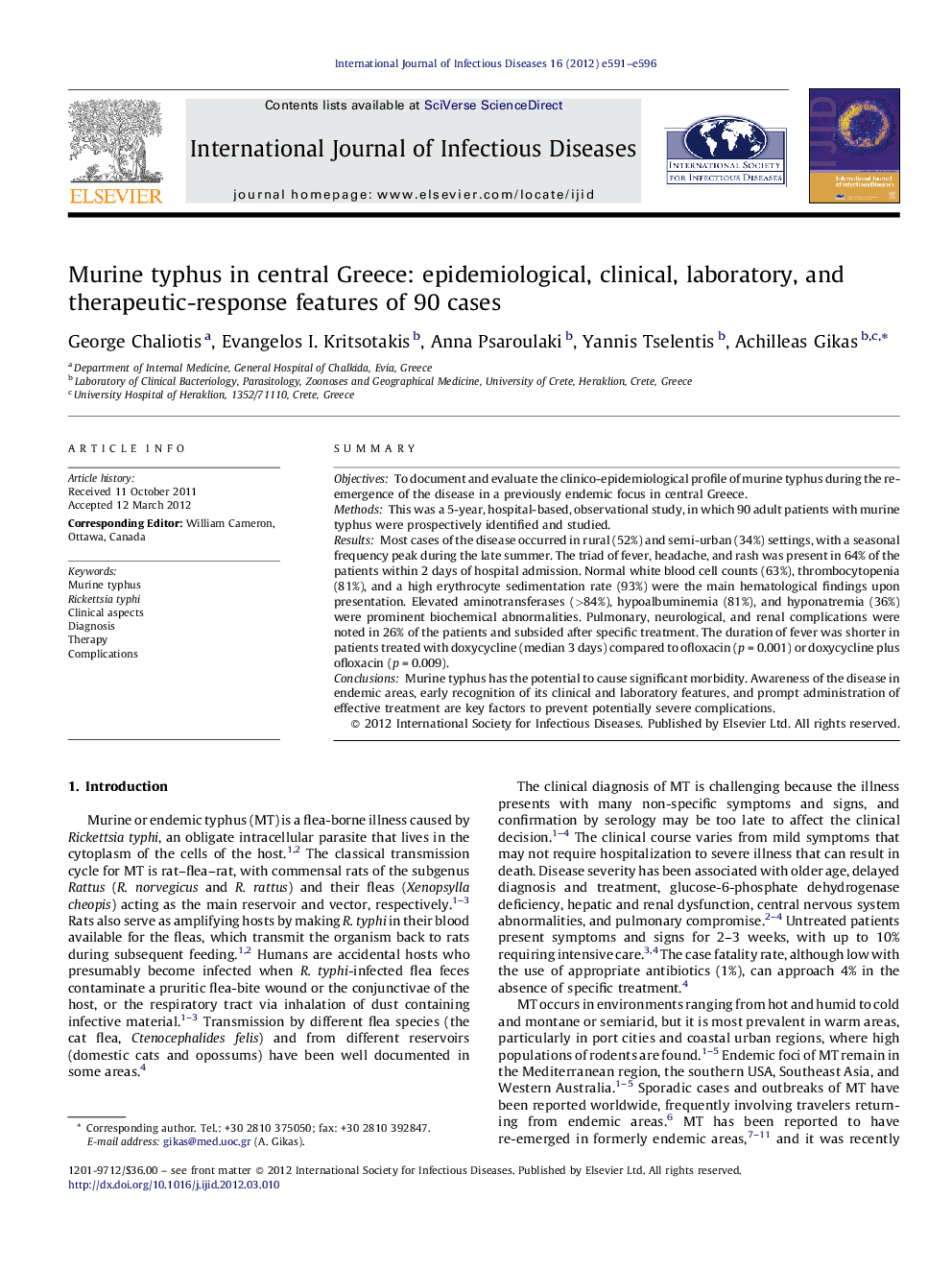| Article ID | Journal | Published Year | Pages | File Type |
|---|---|---|---|---|
| 3363031 | International Journal of Infectious Diseases | 2012 | 6 Pages |
SummaryObjectivesTo document and evaluate the clinico-epidemiological profile of murine typhus during the re-emergence of the disease in a previously endemic focus in central Greece.MethodsThis was a 5-year, hospital-based, observational study, in which 90 adult patients with murine typhus were prospectively identified and studied.ResultsMost cases of the disease occurred in rural (52%) and semi-urban (34%) settings, with a seasonal frequency peak during the late summer. The triad of fever, headache, and rash was present in 64% of the patients within 2 days of hospital admission. Normal white blood cell counts (63%), thrombocytopenia (81%), and a high erythrocyte sedimentation rate (93%) were the main hematological findings upon presentation. Elevated aminotransferases (>84%), hypoalbuminemia (81%), and hyponatremia (36%) were prominent biochemical abnormalities. Pulmonary, neurological, and renal complications were noted in 26% of the patients and subsided after specific treatment. The duration of fever was shorter in patients treated with doxycycline (median 3 days) compared to ofloxacin (p = 0.001) or doxycycline plus ofloxacin (p = 0.009).ConclusionsMurine typhus has the potential to cause significant morbidity. Awareness of the disease in endemic areas, early recognition of its clinical and laboratory features, and prompt administration of effective treatment are key factors to prevent potentially severe complications.
